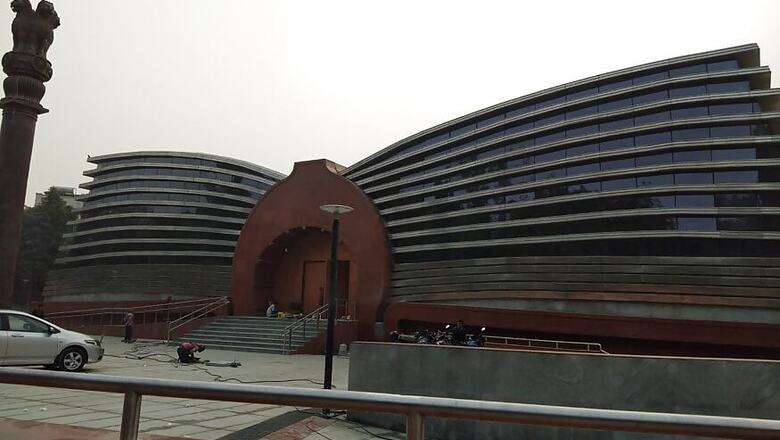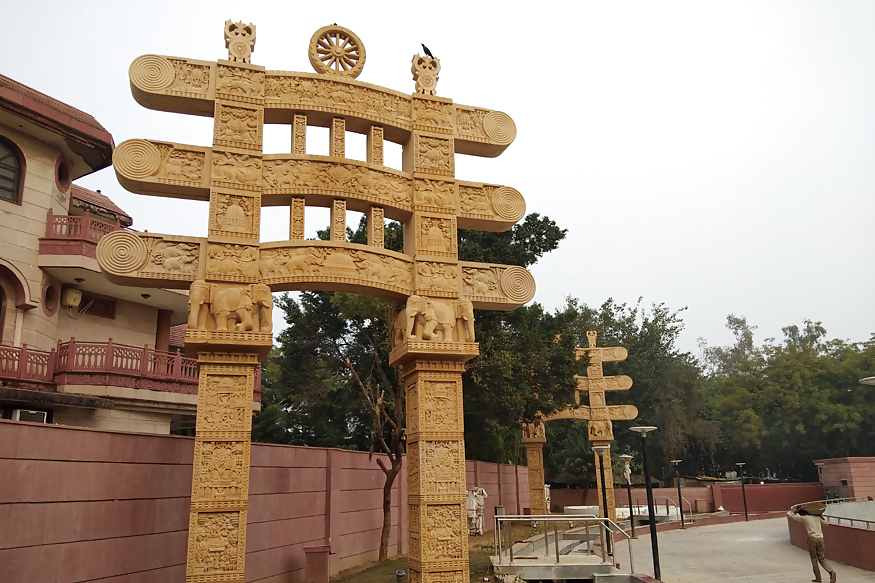
views
New Delhi: While crossing the Delhi Vidhan Sabha, most passersby would never look at the under construction structure right opposite to it — a building that bears no nameplate and is lying in recluse. However, a closer look would reveal that it is being designed as an open book, or rather the Constitution.
This structure in north Delhi was the last home of Dr BR Ambedkar, the architect of the Indian Constitution, later turned into a memorial which is soon to be a museum in the name of the Dalit icon.
Dr Ambedkar, who died in 1956, resided at this address of 26, Alipur Road in north Delhi during his last days. Close to Delhi University, the house spread over three acres land belonged to the Rajah of Sirohi (Rajasthan) and was later purchased by an industrialist, who demolished the building to make a new bungalow. This property was later acquired by the government in 2003 and turned into Dr Ambedkar National Memorial.
Later in 2014, the government decided to revamp the memorial as a museum and Prime Minister Narendra Modi laid its foundation in 2016.
Upon entering the premises, one will see the replicas of the Sanchi Stupa’s Northern Gate and a peepal sapling, making notes of Ambedkar’s inclination towards Buddhism as the Sanchi Stupa was built by Mauryan emperor Ashoka and it is believed that Gautam Buddha attained enlightenment or ‘Bodhi’ under a peepal tree now known as the ‘Bodhi Tree’.
The Buddhist theme continues in the cafeteria, where walls are being painted with murals of the Ajanta Caves. However, the main building stands apart from the rest of the architecture as it does not adhere to the Buddhist theme.

A structure on the lines of the northgate of the Sanchi Stupa. (Image: News18)
The museum’s chief architect, Ajay Behl, who bagged the project through a national-level competition organised by the Public Works Department, said it’s the Constitution that comes to mind when people think of Ambedkar.
“The participants were supposed to submit a design on the Buddhist theme. But I thought that the Constitution is the first thing that occurs to any Indian when they think of Ambedkar. So I submitted a design of an open book signifying the Constitution. The museum resembles a book and upon entering, you start exploring the book,” Behl said.
The Manager of Projects of the Museum Agency, Arunesh Kumar, is trying his best to make the book’s content engaging and appealing to the young generation.
“Mobile phones will narrate Ambedkar’s life to the visitor. The exhibits will include footages related to Ambedkar’s life,” Kumar said.
A part of the museum is dedicated to the Constitution. The architects are hopeful of finishing the project by April 14 — the birth anniversary of Dr BR Ambedkar.
“There will be 16 LED screens where visitors can browse the pages of the Constitution. A scanned version of the original handwritten copy of the Constitution, which is kept at the Parliament’s Library, will also be exhibited here,” added Kumar.
Despite lacking on original artifact, Kumar’s team has made sure that they get the history correct. The original artifacts are lying with the Ambedkar Foundation and fears of vandalism have forced the foundation to not share Ambedkar’s belongings with anyone.
Kumar is being aided by a team of researchers who have visited other museums and places related to BR Ambedkar in Maharashtra. Historians appointed by the Ministry of Social Justice and Empowerment are also assisting in the project.
A wall in the museum has been dedicated to Ambedkar’s first wife Ramabai, who was also a social reformer.
However, not everyone feels that the museum will do justice to Ambedkar’s legacy.
Ratan Lal, a History professor at Hindu College and an Ambedkarite scholar said though the museum would increase awareness about Ambedkar, it is just a symbolic gesture.
Lal is of the view that if we really want to understand him then we should read his works rather than visiting museums.



















Comments
0 comment